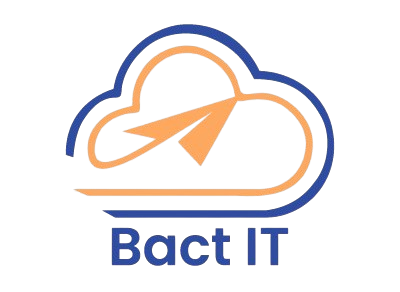Python for Natural Language Processing

We are committed to equipping individuals and organizations with the tools and expertise they need to thrive in a rapidly changing digital world.
Request A Quote !
Python for Natural Language Processing (NLP) Course Outline
Duration: 40–50 Hours
Level: Beginner to Advanced
Delivery Mode: Online / Offline
Target Audience: Data Scientists, Machine Learning Engineers, AI Researchers, and Developers interested in NLP
Prerequisites: Basic knowledge of Python programming is recommended
Module 1: Introduction to Natural Language Processing (NLP)
- What is NLP?
- Applications of NLP in the Real World (Chatbots, Sentiment Analysis, Translation)
- The Role of Python in NLP
- NLP Libraries in Python: NLTK, SpaCy, TextBlob, Gensim, and Hugging Face Transformers
- Setting Up the NLP Environment and IDE (Jupyter Notebooks, VS Code)
Module 2: Text Preprocessing Techniques
- Text Cleaning and Tokenization
- Lowercasing, Removing Punctuation, and Stop Words
- Stemming and Lemmatization Techniques
- Handling Special Characters and Emojis
- Named Entity Recognition (NER) for Extracting Entities from Text
- Bag of Words and TF-IDF (Term Frequency-Inverse Document Frequency)
Module 3: Working with Text Data
- Reading and Writing Text Data (CSV, Excel, JSON, TXT)
- Introduction to Regular Expressions for Text Processing
- Text Normalization and Vectorization Techniques
- Creating Word Clouds for Data Exploration
- Exploring and Visualizing Word Frequencies
- Text Representation with Numpy and Pandas
Module 4: Sentiment Analysis with NLP
- What is Sentiment Analysis?
- Building a Sentiment Analysis Model with Python
- Exploring Sentiment Analysis Datasets (e.g., Movie Reviews, Social Media Data)
- TextBlob for Basic Sentiment Analysis
- Machine Learning Techniques for Sentiment Classification
- Model Evaluation: Accuracy, Precision, Recall, and F1-Score
Module 5: Topic Modeling and Text Classification
- Introduction to Topic Modeling and Its Applications
- Latent Dirichlet Allocation (LDA) for Topic Modeling
- Understanding and Implementing Non-Negative Matrix Factorization (NMF)
- Text Classification Using Supervised Learning Algorithms
- Working with Scikit-learn for Text Classification Models (Naive Bayes, SVM, Logistic Regression)
- Evaluating and Fine-Tuning Text Classification Models
Module 6: Word Embeddings and Advanced Representations
- Introduction to Word Embeddings
- Working with Word2Vec for Word Representation
- Using GloVe (Global Vectors for Word Representation)
- Understanding and Implementing FastText
- Contextual Word Representations using BERT (Bidirectional Encoder Representations from Transformers)
- Sentence and Document Embeddings with Universal Sentence Encoder (USE)
Module 7: Text Generation and Language Modeling
- Introduction to Language Models and Their Applications
- Building a Simple Language Model with N-Grams
- Recurrent Neural Networks (RNN) for Text Generation
- Long Short-Term Memory (LSTM) Networks for Text Sequences
- Introduction to Transformer Models: BERT, GPT (Generative Pretrained Transformers)
- Text Generation using GPT-2 and GPT-3
Module 8: Named Entity Recognition (NER) and POS Tagging
- Introduction to Named Entity Recognition (NER)
- Identifying and Extracting Named Entities from Text
- Part-of-Speech (POS) Tagging Techniques
- Using SpaCy for POS Tagging and Named Entity Recognition
- Building a Custom NER Model with SpaCy and Training with Custom Data
Module 9: Speech Recognition and NLP Applications
- Introduction to Speech Recognition and NLP Integration
- Working with Speech Recognition Libraries (SpeechRecognition, PyAudio)
- Converting Speech to Text and Building Voice-Activated Systems
- Integrating Speech Recognition with NLP for Enhanced Applications
- Building Chatbots using NLP and Speech Recognition
Module 10: Advanced NLP with Deep Learning
- Introduction to Deep Learning for NLP
- Text Classification with Deep Learning using Keras and TensorFlow
- Building a Recurrent Neural Network (RNN) for Text Sequences
- Using Convolutional Neural Networks (CNN) for Text Analysis
- Advanced Deep Learning Architectures for NLP (BERT, GPT-3, T5)
- Fine-Tuning Pre-Trained Models for Specific NLP Tasks (Hugging Face Transformers)
Module 11: End-to-End NLP Project
- Building a Complete NLP Solution: From Data Collection to Model Deployment
- Preprocessing, Model Training, Evaluation, and Optimization
- Deploying NLP Models with Flask or FastAPI
- Case Studies and Real-World Use Cases in NLP (Customer Reviews, Healthcare, Social Media)
- Building a Chatbot or Virtual Assistant using NLP
- Preparing for NLP Job Roles: Interview Tips and Case Studies
